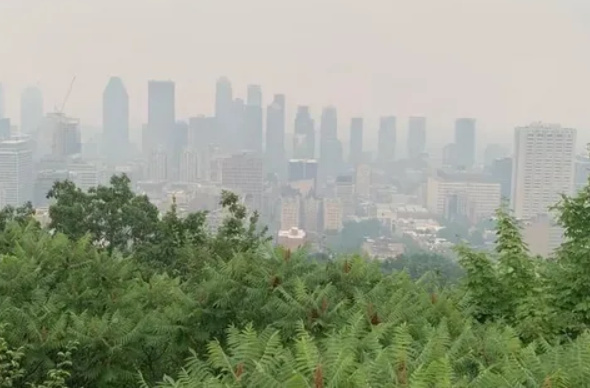How Trees Combat Air Pollution

How Trees Combat Air Pollution Air pollution is a persistent problem in large urban areas, and New York City is no exception. With millions of vehicles on the roads, high levels of industrial activity, and a dense concentration of people, NYC’s air quality can often suffer. However, one natural solution to combating pollution is frequently overlooked—the presence of trees. Urban trees are essential in filtering pollutants, absorbing carbon dioxide, and cooling the environment. With initiatives like the Million Trees NYC program, the city is trying to reduce air pollution by expanding green spaces and increasing tree coverage. This article explores how trees help clean the air in NYC and the broader benefits they provide. Key Takeaways: Trees act as natural air filters: In addition to absorbing pollutants like ozone (O3), sulfur dioxide (SO2), and nitrogen oxides (NOx), trees also capture particulate matter (PM10 and PM2.5) in their leaves. This significantly improves air quality in densely populated urban environments like NYC. Cooling effects reduce energy use and emissions: Trees are beneficial because they cast shade on cities and reduce heat island effects. This leads to decreased energy consumption for air conditioning, thus indirectly reducing emissions and improving air quality. Long-term benefits beyond pollution reduction: Trees contribute to cleaner air and offer long-term environmental, health, and economic advantages. They enhance public health by lowering respiratory illness rates, increasing biodiversity, and even boosting property values in the city. The Air Pollution Problem in NYC New York City, one of the world’s largest metropolitan areas, faces significant challenges with air pollution. Due to the high population density, the sheer volume of vehicles, and continuous industrial and construction activities, NYC’s air quality has often been a cause for concern. This section will delve into the primary sources of air pollution, provide data on air quality over recent years, and discuss the impact of this pollution on public health and the environment. Primary Sources of Air Pollution in NYC Vehicle Emissions: Traffic congestion in NYC contributes heavily to air pollution, with cars, trucks, buses, and taxis emitting pollutants like nitrogen oxides (NOx), particulate matter (PM), and carbon monoxide (CO). Diesel-powered vehicles, in particular, are significant contributors to air pollution in the city. Industrial Activity: Despite being a heavily urbanized area, industrial activities in NYC—such as factories, power plants, and manufacturing centers—emit harmful pollutants. These industries release nitrogen dioxide (NO2), sulfur dioxide (SO2), and volatile organic compounds (VOCs) into the air. Construction Dust: Construction and demolition projects, constant in a growing city like New York, produce dust and particulate matter (PM10 and PM2.5). These fine particles are easily inhaled and can aggravate respiratory conditions. Statistics and Data on NYC’s Air Quality Over the years, air quality in New York City has improved due to stricter regulations and cleaner technologies. However, certain pollutants remain at levels that can affect public health. Below is a table summarizing the levels of key pollutants in NYC in recent years. Pollutant Annual Average Level (2018) Annual Average Level (2023) EPA Standard (for comparison) PM2.5 (µg/m³) 9.5 7.2 12 µg/m³ NO2 (ppb) 35.6 27.9 53 ppb Ozone (O3) (ppb) 61 58 70 ppb SO2 (ppb) 4.5 2.1 75 ppb Trends in Air Quality Particulate Matter (PM2.5): Fine particulate matter levels have decreased over time but remain a concern in high-traffic areas. Nitrogen Dioxide (NO2): Levels of NO2 have dropped due to cleaner vehicle emissions and regulations on industrial emissions. Ozone (O3): Ozone levels fluctuate but tend to be higher during summer due to the heat and sunlight reacting with pollutants. Sulfur Dioxide (SO2): SO2 levels have significantly decreased, primarily due to the switch from high-sulfur fuels to cleaner energy sources. Air Pollution’s Effects On The Environment And Public Health Public Health Impacts: Air pollution contributes to respiratory illnesses, including asthma, bronchitis, and other chronic lung diseases. Ground-level ozone (O3) and delicate particulate matter (PM2.5) harm susceptible groups, especially the elderly and people with underlying medical disorders. A 2019 study indicated that around 3,000 premature deaths per year in NYC are related to poor air quality, mainly due to PM2.5 exposure. Long-term exposure to pollutants like NO2 can lead to cardiovascular diseases and worsen preexisting health conditions. Environmental Impacts: Pollutants such as nitrogen oxides (NOx) form ground-level ozone, a key component of smog. This ozone harms plant life and reduces biodiversity in the city’s green spaces. Sulfur dioxide emissions (SO2) cause acid rain, which lowers the pH of water bodies and damages aquatic ecosystems. How Trees Reduce Air Pollution Trees are essential in mitigating air pollution in urban areas like New York City by serving as natural filters that capture and absorb various harmful pollutants. They contribute to improving air quality through several mechanisms, including absorbing gases, filtering particulate matter, and producing oxygen while reducing carbon dioxide (CO2). Additionally, trees help lower city temperatures, reducing pollution from energy consumption. This section outlines the specific ways trees help combat air pollution. Absorption of Pollutants Trees can uniquely absorb hazardous gases like ozone (O3), sulfur dioxide (SO2), and nitrogen oxides (NOx). These pollutants, often emitted from vehicles and industrial activities, contribute to smog formation and respiratory problems in humans. Trees absorb these gases through their leaves stomata (tiny pores on leaf surfaces), reducing their concentration in the air. Nitrogen Oxides (NOx): Trees absorb NOx, which is released from vehicle exhausts and industrial processes. This pollutant contributes to the formation of ground-level ozone and acid rain, both of which are harmful to human health and the environment. Sulfur Dioxide (SO2): Trees absorb SO2, a pollutant primarily emitted by industrial sources, mainly from burning fossil fuels. SO2 exposure can lead to respiratory illnesses and acid rain formation. Ozone (O3): Ground-level ozone is a significant component of smog. It forms when NOx and volatile organic compounds (VOCs) react in sunlight. Trees help mitigate ozone levels by absorbing precursors like NOx and releasing oxygen. Particulate Matter Filtration Particulate matter filtering is one of the main ways trees help purify the air. Delicate particulate matter, such as PM10 (particles smaller




